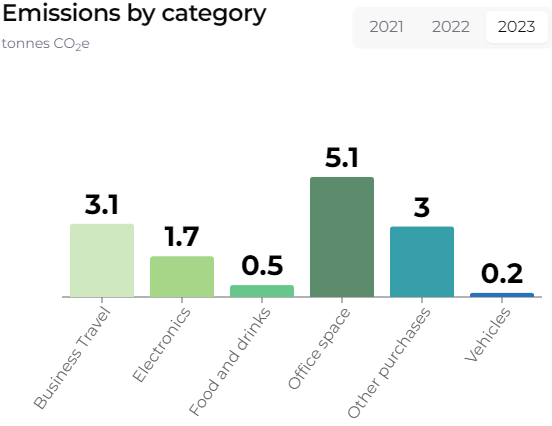Why should small and medium-sized companies work with sustainability?

Updated at 2025-10-21
Increased sales
Sustainable products are growing by 28%, compared to 20% for products with no sustainability profile (McKinsey & NielsenIQ 2023).
30% of companies also report gaining new customers thanks to their sustainability efforts (SME Climate Hub 2024 survey).
Strengthened position in procurements
New EU directives make sustainability reporting a requirement for large companies, which indirectly also affects their suppliers. 42% of large companies state they have already had to change suppliers due to insufficient sustainability efforts (according to a survey by OP Företagsbanken, 2023), making it more relevant than ever to keep track of your own sustainability reporting to be an attractive partner for larger players. Read more about the EU directives below.
53% of small and medium-sized enterprises believe that their sustainability efforts make their brand stand out from the competition (SME Climate Hub 2024 survey).
Become a more attractive employer
A focus on sustainability is now a must for many talents when choosing future employers. Four out of ten Swedes think it is very important that the employer has active sustainability work in place when they are looking for a new job (Manpower Work Life, 2020).
Stronger brand
Nearly two out of three entrepreneurs report that their sustainability efforts have strengthened their customer relationships. Half of the same group also states that it has created satisfied employees and benefited sales efforts, according to a survey conducted by Företagarna, Fossilfritt Sverige, and Beyond Intent in 2019.
62% of small and medium-sized enterprises report that their business reputation has improved thanks to their sustainability efforts (SME Climate Hub 2024 survey).
What is the first step?
To focus on the right climate actions, you need to measure your company's emissions. With a climate calculation, you get an overview of which activities cause the highest climate emissions and an understanding of where you should act to reduce them. The calculations help your company find the best path toward a more sustainable business with less impact on the planet. Here we list some of the steps that are reasonable to take after starting to calculate emissions.
- Goals for reducing emissions
Set measurable, time-bound goals for reducing greenhouse gas emissions. This creates a clear target and path forward for your company's efforts to reduce its carbon footprint.
- Optimize
Identify which parts of your operation contribute most to emissions. This can provide insight into where direct actions can have the greatest effect.
- Benchmarks and comparisons
Compare your emissions data with industry standards or with past performances to identify areas for improvement.*
- Climate financing
For emissions that cannot be eliminated, your company may consider financing climate projects. By using emissions data, your company can precisely match its climate financing with its actual climate footprint.
- Sustainability reporting
Use the data in sustainability reports to communicate your company's climate efforts and progress to stakeholders, including customers, investors, and employees.
- Investor relations
Communicate your company's efforts and progress in reducing emissions to investors and other financial stakeholders to demonstrate your company's long-term commitment to sustainability and potential to manage future risks and opportunities.
* You can compare your company's emissions over time using our tool.

Graph from GoClimate's tool
GoClimate has already helped over 1000 companies with their sustainability work. Contact us today to allow you and your customers to be part of the solution!
Related content
Here you can find articles and pages relevant to this subject.